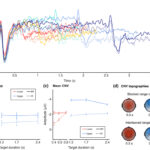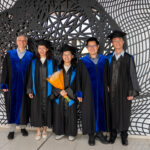Wang, X., Wöllner, C., & Shi, Z. (2021). Perceiving Tempo in Incongruent Audiovisual Presentations of Human Motion: Evidence for a Visual Driving Effect. Timing & Time Perception, -1(aop), 1–21. https://doi.org/10.1163/22134468-bja10036
Abstract
Compared to vision, audition has been considered to be the dominant sensory modality for temporal processing. Nevertheless, recent research suggests the opposite, such that the apparent inferiority of visual information in tempo judgements might be due to the lack of ecological validity of experimental stimuli, and reliable visual movements may have the potential to alter the temporal location of perceived auditory inputs. To explore the role of audition and vision in overall time perception, audiovisual stimuli with various degrees of temporal congruence were developed in the current study. We investigated which sensory modality weighs more in holistic tempo judgements with conflicting audiovisual information, and whether biological motion (point-light displays of dancers) rather than auditory cues (rhythmic beats) dominate judgements of tempo. A bisection experiment found that participants relied more on visual tempo compared to auditory tempo in overall tempo judgements. For fast tempi (150 to 180 BPM), participants judged ‘fast’ significantly more often with visual cues regardless of the auditory tempo, whereas for slow tempi (60 to 90 BPM), they did so significantly less often. Our results support the notion that visual stimuli with higher ecological validity have the potential to drive up or down the holistic perception of tempo.




